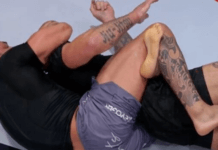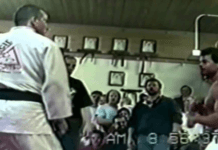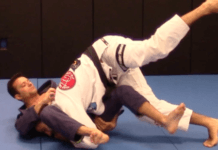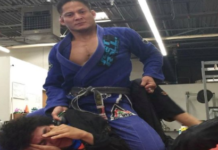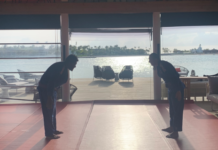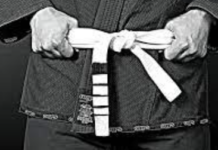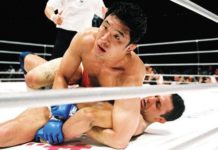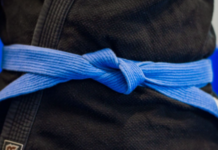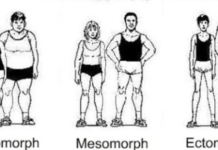BJJ is turning to a worldwide popular sport. There number of practitioners that like to compete steadily increases. That being said, the supply closely follows the rise of the demands. What we mean by this is that there are many BJJ and grappling tournaments that are held all around the world. Most of these tournaments are low-level, local tournaments where competitors can give their skills a go. However, there are a few BJJ tournaments that are considered world-class.
That being said, there is no unified ruleset when it comes to BJJ tournaments. Different tournaments have different rules. This article will shed some light on the rules of some of the biggest BJJ and grappling tournaments in the world.
Eddie Bravo Invitational (EBI) rules
The Eddie Bravo Invitational tournament is organized by the man himself – Eddie Bravo. This has become one of the biggest grappling tournaments in the world due to the unique ruleset. It’s held once every 4-5 months, usually. The core of the tournament consists of 16 grappling competitors (i.e. they don’t wear a BJJ Gi). And then it’s a knockout tournament. Everyone gets their own competitors and they either advance to the next round or they fall out of the tournament.
The unique thing about the EBI tournaments is that there are no points. If you get mount – you won’t get any point for it and neither will your opponent get any point if he takes your back. The match lasts 10 minutes and the two of you can only end it by way of submission. If there is no winner in the first 10 minutes, then the match advances to overtime.
Before the overtime rounds begin, the two competitors will flip a coin as to who goes first. Then the winner of the coin flip will select whether he will take the opponent’s back and go from there – or if he will start from the spider-web position and go for the armbar. Then his opponent takes a turn doing the same. There can be potentially up to three rounds of overtime in EBI. There is no time limit for each of the rounds. The attacker needs to submit the opponent and the opponent needs to escape.
If one of the competitors submits the other, and then escapes on his opponent’s turn to attack – then it’s over right there and then. If the two opponents do a submission – then whoever got the submission in a quicker time wins. If the two competitors each escaped their opponent’s attacks, then the match advances another round. There are three rounds for the overtime, as we’ve mentioned. And if in each of the three rounds both of the competitors escape their opponent’s attacks – then the competitor with the quickest escape time of all the three rounds combined wins the match.
There are also important details about what constitutes an attacking position in the overtime – and what doesn’t. For example, if you have a seatbelt (over-under hooks) on your opponent in the attacking position, but you don’t have the leg hooks in – the position is still live and the match is going. If you don’t have the leg hooks but you have two underhooks with your arms – the round stops. If you transition from back control to armbar, then it’s still live. This is also the case when you enter the truck position. If you want to learn more about these details of the EBI overtime rounds, then see in the video below.
IBJJF Rules
The International Brazilian Jiu-Jitsu Federation hosts one of the biggest BJJ tournaments in the world. What you will notice though once you take a look at the rules is the fact that they are much more complicated when compared to the EBI, for an example. The addition of points makes things a lot more complicated.
So, you can score points in different ways and you will be rewarded for advancing and improving your position. If you score a takedown and put your opponent on his back – then you will be rewarded with two points. If you pass your opponent’s guard, then you’ll get three points. If you get to mount or take your opponent’s back – you will get the maximum of 4 points. There are also advantages that you need to take into consideration – and these are things you do that improve your position and show that you’re an active player. Conversely, you may get penalized for lack of activity or stalling.
Under IBJJF rules it’s illegal to slam your opponent on the ground if you want to escape. So, you can forget about blocking a triangle by lifting your opponent’s entire weight and then slamming him on the ground. Also, you can’t use small-joint manipulation against your opponent – this means that you can’t grab his fingers or toes and manipulate them. This will get you disqualified. And one of the most notorious moves that will get you disqualified under IBJJF rules is the knee reap. If you reap your opponent’s knee then the match is over and you get disqualified. There are some moves that aren’t allowed – moves that target the neck. One of them that spring to mind is the so-called can opener that you can use for opening your opponent’s guard when you’re in his full guard.
The Gi that you will wear needs to be uniform in terms of coloring. It can only be full black, full white, or full blue. If you get any other colors or if you mix colors (e.g. white top and black bottom) you won’t be allowed to compete. Protective shoes or groin protectors are also not allowed.
Many people get confused when they are about studying through the IBJJF rule set. There are so many rules that they may make your head spin. That begin said, you can check out the official book of IBJJF rules for clarifications at this link. You can also watch the helpful explanation of some of the rules in the videp below:
ADCC rules
ADCC is yet another of the most popular BJJ and grappling tournaments in the world. This tournament features its own rules, too. That being said, these rules are more similar to the IBJJF rules than to the EBI tournament rules.
This tournament still favors advancing positions – you will be rewarded with points for it. Different advances will give you different points. If you get a clean takedown – meaning you take your opponent down and you pass the guard – you will get 4 points. If you just pass the guard, then you get 3 points. If you get back control with two hooks – you get 4 points. If you get the mount, then you get 2 points. If you do a takedown and you end in the guard or half-guard – you get 2 points. And so on and so forth.
A unique thing here is that slamming (which is completely banned under IBJJF rules) is allowed at ADCC only when you’re trying to escape a submission. In all other cases, you will get disqualified. If you voluntarily jump in your opponent’s guard or if you go from standing to sitting and remain there for 3 seconds or more – you will be taken a point for this. If you’re passive, then the referee will give you two warnings and then start to deduct points. And this goes without saying – but if you have a teammate and the two of you decide the outcome of your fight beforehand – then the two of you will be disqualified. Finally, you can’t grab your opponent’s shorts or shirt – it will get you disqualified.
What’s allowed, on the other hand, is any kind of choke or armbar, wristlock, or shoulder lock. Also, you can use any leg attacks you can put your mind to – heel hooks, ankle locks, toeholds, etc.
If you want to take a look at the full rules of ADCC – then we advise you to take a look on the ADCC website.
Metamoris rules
We will keep things short and sweet for this one. Metamoris was a renowned grappling tournament where some of the best practitioners get to compete against one another. This tournament’s popularity exploded back in the day when Eddie Bravo went on to triumph over Royler Gracie due to a triangle choke – setting the BJJ world afire.
That being said, the ruleset is very simple at Metamoris. The matches last 20 minutes. There are no points – which helps keep things very simple. Only submissions count. If the match lasts 20 minutes, then it means it’s a draw. There are Gi and no-Gi matches.
Depending on whether you will use the Gi or not is the legality of the heel hook submission. If you do a heel hook while the two of you are wearing Gis – you will be disqualified for it. If you do a heel hook while doing a no-Gi match, then you can proceed with it and finish the match.
Metamoris was one of the biggest tournaments in the world precisely due to the fact that it kept things simple.
In conclusion
There are many high-level BJJ tournaments all around the world. We have talked about the rules of some of the biggest tournaments. If you want to compete in some of them, then you better learn the rules. The worst thing that could happen is that you get disqualified for doing a move that you thought was legal – but wasn’t. Or you show up in an IBJJF tournament wearing a gray Gi and get disqualified right off the bat. Learn the rules and use them to your advantage.
Check also:


